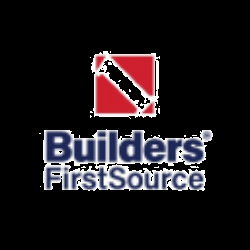BLDR shows strong financial health and a solid business model with a focus on innovation and strategic growth through acquisitions and digital initiatives. However, the company faces challenges in the multifamily sector and anticipated market headwinds that could impact future performance.
Analysis Date: February 20, 2025
Last Updated: March 11, 2025
Trailing Twelve Months (TTM) values provide a view of the company's performance over the last year.
Graham Value Metrics
Benjamin Graham's value investing approach focuses on finding stocks with a significant margin of safety between their intrinsic value and market price.
Intrinsic Value
Estimated fair value based on Graham's formula
$361.43
Current Market Price: $122.67
IV/P Ratio: 2.95x (>1.0 indicates undervalued)
Margin of Safety
Gap between intrinsic value and market price
66.0%
Graham recommended a minimum of 20-30% margin of safety
Higher values indicate a greater potential discount to fair value
ROE: 23.946333840114242
ROA: 0.0017972073552081124
Gross Profit Margin: 32.82202124985808
Net Profit Margin: 6.572085729654596
Trailing Twelve Months (TTM) values provide a view of the company's performance over the last year.
Strong Gross Profit Margin
32.82%
Gross Profit Margin
The gross profit margin of 32.82% indicates that the company retains a good portion of revenue after covering the cost of goods sold, reflecting operational efficiency.
Healthy Operating Profit Margin
9.73%
Operating Profit Margin
An operating profit margin of 9.73% shows that the company is effectively managing its operating expenses relative to its revenue.
Low Return on Equity
The return on equity of 0.10% is very low, suggesting that the company is not effectively generating profit from its equity base.
About Profitability Metrics
Profitability metrics measure a company's ability to generate earnings relative to its revenue, operating costs, and other relevant metrics. Higher values generally indicate better performance.
Return on Equity (ROE)
Measures how efficiently a company uses its equity to generate profits
23.95%
10%
15%
Higher values indicate better returns for shareholders
TTM (as of 2025-04-16)
Return on Assets (ROA)
Measures how efficiently a company uses its assets to generate profits
0.00%
3%
7%
Higher values indicate better asset utilization
TTM (as of 2025-04-16)
Gross Profit Margin
Percentage of revenue retained after accounting for cost of goods sold
32.82%
20%
40%
Higher values indicate better efficiency in production
TTM (as of 2025-04-16)
Net Profit Margin
Percentage of revenue retained after accounting for all expenses
6.57%
8%
15%
Higher values indicate better overall profitability
TTM (as of 2025-04-16)
Low Debt to Equity Ratio
0.15
Debt to Equity Ratio
The debt to equity ratio of 0.15 indicates a conservative capital structure with minimal reliance on debt, which lowers financial risk.
Strong Current and Quick Ratios
Current Ratio of 1.77 and Quick Ratio of 1.09 indicate good liquidity, suggesting that the company can easily meet its short-term obligations.
Low Cash Ratio
A cash ratio of 0.09 implies that the company has limited cash reserves compared to its current liabilities, which may pose liquidity challenges.
About Financial Health Metrics
Financial health metrics assess a company's ability to meet its financial obligations and its overall financial stability.
Debt to Equity Ratio
Total debt divided by total equity
0.15x
1.0x
2.0x
Lower values indicate less financial leverage and risk
Less than 1.0 is conservative, 1.0-2.0 is moderate, >2.0 indicates high risk
Q4 2024
Current Ratio
Current assets divided by current liabilities
1.77x
1.0x
2.0x
Higher values indicate better short-term liquidity
Less than 1.0 is concerning, 1.0-2.0 is adequate, greater than 2.0 is good
Q4 2024


